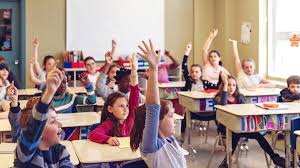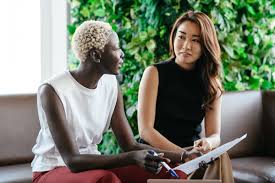Introduction
Education is an ever-evolving field, constantly adapting to new discoveries, technologies, and methodologies. One of the most intriguing and revolutionary approaches gaining traction today is reverse learning. This method challenges traditional learning paradigms by flipping the script and encouraging students to engage with material in a more dynamic and interactive way. In this article, we will explore the concept of reverse learning, its benefits, and how it can transform the educational experience for both students and teachers.
What is Reverse Learning?
A New Approach to Education
Reverse learning, also known as “flipped learning” or the “flipped classroom,” is a pedagogical approach where traditional educational methods are reversed. Instead of learning new content in the classroom and doing homework at home, students first encounter new material at home, typically through video lectures or reading assignments, and then apply that knowledge in the classroom through interactive activities, discussions, and projects.
The Role of Technology
Technology plays a crucial role in reverse learning. With the advent of online platforms, educational videos, and digital resources, students have unprecedented access to learning materials outside the classroom. This accessibility allows for a more flexible and personalized learning experience.
The Benefits of Reverse Learning

Increased Student Engagement
One of the most significant benefits of reverse learning is the increased level of student engagement. By shifting the focus from passive listening to active participation, students become more involved in their learning process. Interactive classroom activities, such as group discussions, problem-solving exercises, and hands-on projects, encourage students to engage with the material in meaningful ways.
Improved Understanding and Retention
Reverse learning helps improve understanding and retention of information. When students first encounter new content at their own pace, they have the opportunity to review and digest the material before applying it in the classroom. This self-paced learning allows students to develop a deeper understanding and reinforces retention through active participation and application.
Personalized Learning
Reverse learning supports personalized learning by allowing students to learn at their own pace and style. By providing access to a variety of resources, such as video lectures, articles, and interactive simulations, students can choose the materials that best suit their learning preferences. This individualized approach helps address diverse learning needs and fosters a more inclusive educational environment.
Enhanced Teacher-Student Interaction
In a traditional classroom, teachers often spend a significant amount of time lecturing, leaving little room for individualized attention and support. Reverse learning frees up classroom time for teachers to interact with students on a more personal level. Teachers can provide targeted feedback, address specific questions, and facilitate collaborative learning experiences, leading to a more supportive and effective learning environment.
Development of Critical Thinking Skills
Reverse learning emphasizes the development of critical thinking skills. By engaging with the material before class, students are encouraged to think critically, ask questions, and analyze information independently. Classroom activities further promote critical thinking by challenging students to apply their knowledge, solve problems, and engage in discussions that require higher-order thinking.
Also Read What Happened to Yahoo? From Internet Pioneer to Fallen Giant
Preparation for Real-World Applications
Reverse learning prepares students for real-world applications by fostering skills that are essential for success in the modern world. Collaboration, communication, problem-solving, and self-directed learning are all emphasized in a reverse learning environment. These skills are not only valuable in academic settings but also in professional and personal contexts.
Implementing Reverse Learning
Planning and Preparation
Successful implementation of reverse learning requires careful planning and preparation. Teachers must identify appropriate resources, create engaging and informative video lectures, and design interactive classroom activities that reinforce and build upon the content learned at home.
Leveraging Technology
Technology is a cornerstone of reverse learning. Teachers can utilize various online platforms, educational software, and digital tools to create and distribute learning materials. Platforms like YouTube, Khan Academy, and educational websites provide a wealth of resources that can enhance the reverse learning experience.
Encouraging Student Accountability
For reverse learning to be effective, students must take responsibility for their own learning. Teachers can encourage accountability by setting clear expectations, providing guidelines for reviewing materials, and incorporating assessments that measure students’ preparedness and understanding.
Creating an Interactive Classroom Environment
The classroom environment in a reverse learning model should be interactive and student-centered. Teachers can facilitate group discussions, collaborative projects, and hands-on activities that promote active learning. Creating a supportive and inclusive classroom culture is essential for fostering student engagement and participation.
Continuous Assessment and Feedback
Continuous assessment and feedback are crucial components of reverse learning. Teachers should regularly assess students’ understanding through quizzes, reflections, and discussions. Providing timely and constructive feedback helps students identify areas for improvement and supports their ongoing learning journey.
Challenges of Reverse Learning
Resistance to Change
One of the primary challenges of reverse learning is resistance to change. Both students and teachers may be accustomed to traditional teaching methods and may initially struggle to adapt to the new approach. Overcoming this resistance requires clear communication, training, and support.
Access to Technology
Not all students have equal access to technology, which can create barriers to implementing reverse learning. Ensuring that all students have access to the necessary devices and internet connectivity is essential for equitable learning opportunities.
Time and Effort
Creating high-quality video lectures and interactive classroom activities requires significant time and effort from teachers. Schools and educational institutions must provide adequate support and resources to help teachers successfully implement reverse learning.
Case Studies and Success Stories
Sal Khan and Khan Academy
Sal Khan, the founder of Khan Academy, is a pioneer of the reverse learning model. Khan Academy’s extensive library of video lectures and interactive exercises has made it a valuable resource for students and teachers worldwide. The success of Khan Academy demonstrates the potential of reverse learning to transform education.
Clintondale High School
Clintondale High School in Michigan implemented a reverse learning model and saw remarkable improvements in student performance. The school’s flipped classroom approach led to higher test scores, increased student engagement, and reduced failure rates. Clintondale High School’s success story highlights the positive impact of reverse learning on student outcomes.
Conclusion
Reverse learning is a revolutionary approach to education that has the potential to transform the learning experience for students and teachers alike. By flipping the script and emphasizing active participation, personalized learning, and critical thinking, reverse learning addresses many of the limitations of traditional teaching methods. While there are challenges to implementation, the benefits of reverse learning are clear, and its success in various educational settings demonstrates its potential to enhance education. As we continue to explore and refine this innovative approach, reverse learning may become an essential component of the future of education.
FAQs
1. What is reverse learning?
Reverse learning, also known as flipped learning or the flipped classroom, is a pedagogical approach where students first encounter new material at home, typically through video lectures or reading assignments, and then apply that knowledge in the classroom through interactive activities, discussions, and projects.
2. How does reverse learning benefit students?
Reverse learning benefits students by increasing engagement, improving understanding and retention, supporting personalized learning, enhancing teacher-student interaction, developing critical thinking skills, and preparing students for real-world applications.
3. What role does technology play in reverse learning?
Technology plays a crucial role in reverse learning by providing access to online platforms, educational videos, and digital resources that students can use to learn new material at home. It also facilitates the creation and distribution of engaging learning materials.
4. What are the challenges of implementing reverse learning?
Challenges of implementing reverse learning include resistance to change, unequal access to technology, and the time and effort required from teachers to create high-quality learning materials and interactive classroom activities.
5. Can reverse learning be effective in all educational settings?
While reverse learning can be effective in various educational settings, its success depends on factors such as access to technology, teacher support, and student accountability. With proper planning and resources, reverse learning has the potential to enhance education in diverse contexts.


